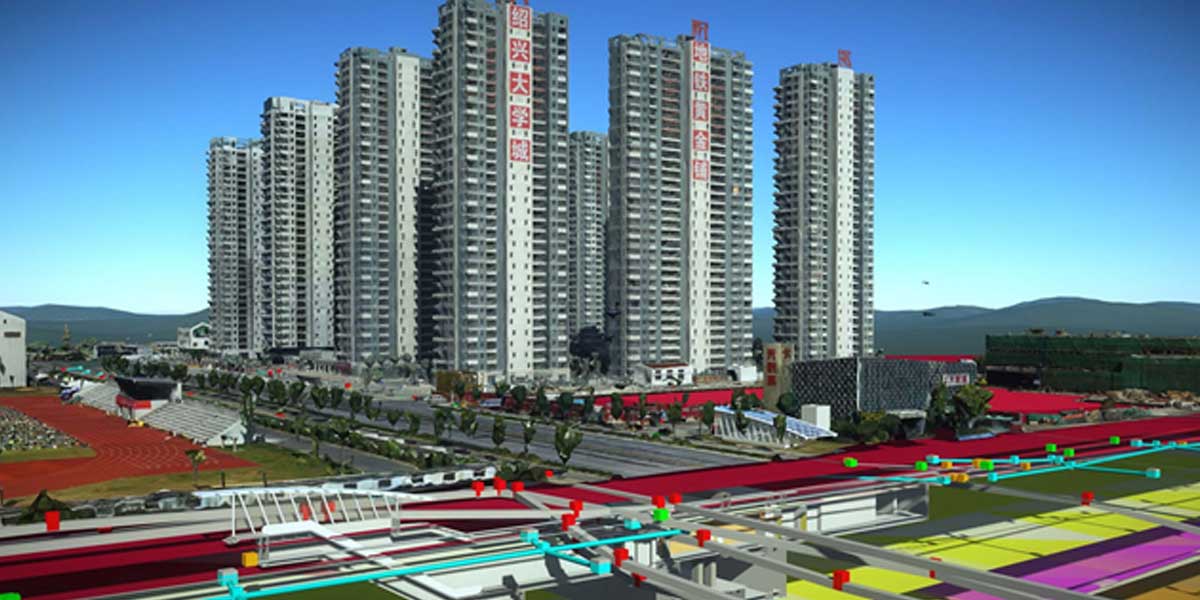Construction industry has long been criticised for low productivity and inefficiencies. How can you
use software or combinations of software to overcome those well-known lacunae in your projects? Nidhi S describes two cases.
Barring the project-specific nuances, most of the construction projects fail as a result of incomplete
site information, inadequate interdisciplinary coordination, poor project management and execution
and lack of innovation. The design prepared based on inadequate site information needs to be
altered several times while the execution is going on due to unexpected ground conditions such as
different site levels, unknown utilities along the roadside, extended foundation of a nearby building,
to name a few. Preparing an alternate design takes substantial time which derails the project
schedule and results in immeasurable loss of money due to stranded manpower and machinery.
Such issues can be overcome by deploying advanced technologies to collect reliable site
information.
Shaoxing in 3D
Shaoxing, an ancient city in China, proposed a challenging project connecting the cities of
Hangzhou and Shaoxing through a Railway system. The proposed railway line passes through the
city’s old town, featuring narrow roads, river courses, bridges, existing railway lines and historically
protected zones. The design needs to interface with all these structures which are owned by
different government organisations in both cities.

Consolidating this information at one place was a mammoth task for Huadong Engineering
Corporation Limited (HDEC), the contractor.
HDEC adopted digital twins approach and created a 3D reality mesh of the region by leveraging
the aerial photography within ContextCapture. This technology converts photos captured through
drones or other mobile devices into high-quality reality meshes and point clouds of different size
Contracting Model: Build, Operate, Maintain
and scale. The digital mesh reflects the topography, existing structures such as buildings, road
network and open spaces. Along with it, Bentley OpenRoads was used for 3D modelling of
subsurface utility engineering based on the information gathered from the government
organisations from both cities. This is used in combination with GeoStation (local 3D geology
software) to create an integrated 3D BIM model of proposed rail route alongside the existing
railway route.
Together, these software packages enabled them to gain a comprehensive insight into existing
conditions of the area, required for design and construction of new infrastructure in the region. This
reduced the probability of any surprises during execution and paved the path for smooth execution
of the project.
The use of technology, on one hand, provided accurate information which was otherwise
not possible and, on the other hand, saved 800 working hours of site data collection time. The
comprehensive 3D BIM model provided greater visibility to the stakeholders which helped in better
decision making. This, along with digital workflows, shortened the entire design production cycle by
20%.
Drones on the Chenab
Chenab bridge, one of the most challenging projects embarked by Indian Railways, is using similar
technologies for gathering site data. Chenab bridge is located in Jammu and Kashmir, which is a
part of Udhampur-Srinagar-Baramulla Rail link project. The bridge is placed in an area with no
accessibility by road/train and the terrains have hugely varying steep slopes between 45 and 77
degrees. These extreme conditions made the collection of accurate topography information a big
task for the project team.
The team used drones (unmanned aerial vehicles, or UAVs) to take photographs which were
converted into a 3D reality mesh and Point clouds model to produce accurate site topography
using Bentley ContextCapture. This enabled the team to come up with the most feasible design
option and remove all ambiguities during construction. Using drones and reality modelling to
survey the project site, Indian Railways saved 225 resource days equivalent to saving $40,000.

The project is currently in the execution phase and the project team is using the 3D reality mesh to
even check the project progress for quarterly and monthly review meetings. The 3D reality mesh
generated by the drones has to be compared with the designed 3D model to check the percentage
completion with respect to what was planned.

The 3D reality model provides a high-resolution image of the ongoing work and project engineers
are using it to identify quality related defects on the concrete surfaces. Enabling the power of 3D
reality mesh, the project engineer can perform quality and constructability checks remotely, which
is a huge saving of time, money and effort. In short, the 3D reality mesh is providing a quantitative
as well as a qualitative review of the project progress. Reality model has reduced the efforts
required for quality checks by 80%.
These examples showcase how technology like 3D reality mesh has been implemented for
gathering accurate site information and used for quality control and site monitoring. This brings us
to a very conclusive insight that tools like 3D reality mesh can have several applications in the
construction industry and its true potential depends on the ability of the project team to take
maximum advantage of the available tools.
The author is an engineering head for large projects and a construction law expert.




















